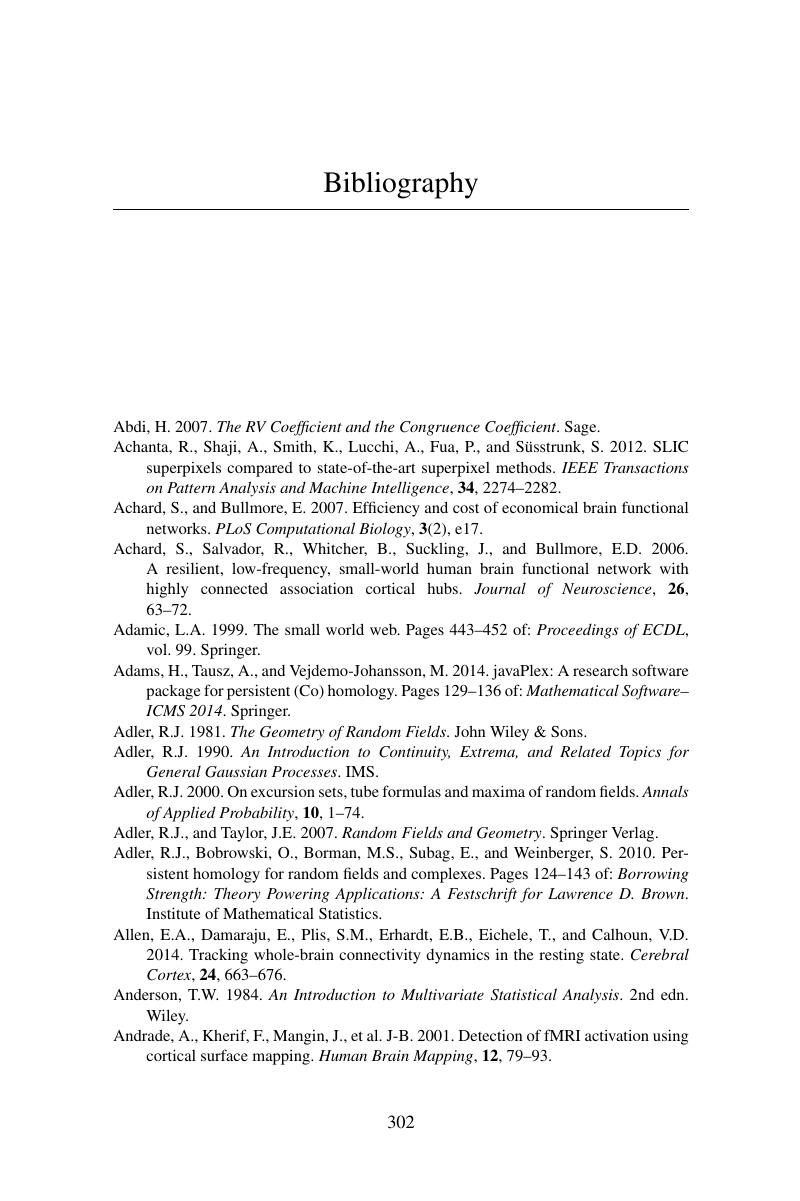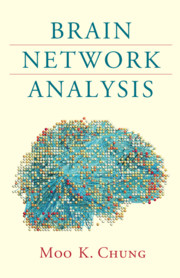Book contents
- Frontmatter
- Dedication
- Contents
- Preface
- 1 Statistical Preliminary
- 2 Brain Network Nodes and Edges
- 3 Graph Theory
- 4 Correlation Networks
- 5 Big Brain Network Data
- 6 Network Simulations
- 7 Persistent Homology
- 8 Diffusions on Graphs
- 9 Sparse Networks
- 10 Brain Network Distances
- 11 Combinatorial Inferences for Networks
- 12 Series Expansion of Connectivity Matrices
- 13 Dynamic Network Models
- Bibliography
- Index
- References
Bibliography
Published online by Cambridge University Press: 10 June 2019
- Frontmatter
- Dedication
- Contents
- Preface
- 1 Statistical Preliminary
- 2 Brain Network Nodes and Edges
- 3 Graph Theory
- 4 Correlation Networks
- 5 Big Brain Network Data
- 6 Network Simulations
- 7 Persistent Homology
- 8 Diffusions on Graphs
- 9 Sparse Networks
- 10 Brain Network Distances
- 11 Combinatorial Inferences for Networks
- 12 Series Expansion of Connectivity Matrices
- 13 Dynamic Network Models
- Bibliography
- Index
- References
Summary

Information
- Type
- Chapter
- Information
- Brain Network Analysis , pp. 302 - 325Publisher: Cambridge University PressPrint publication year: 2019
